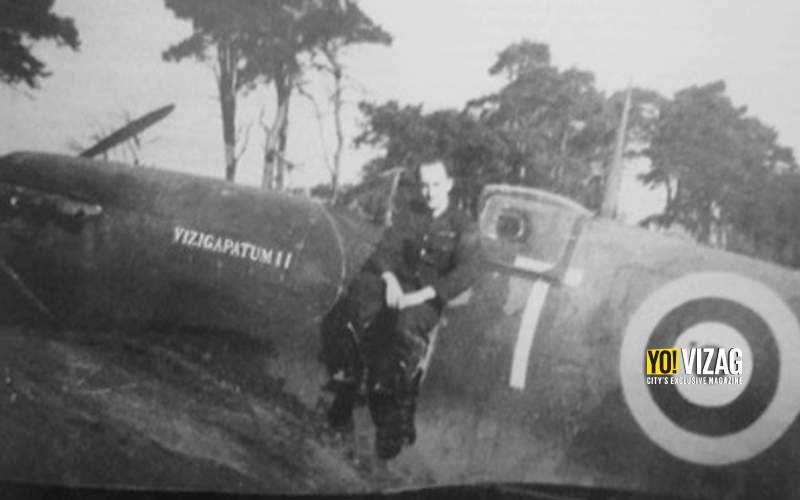

When Britain’s wartime Prime Minister Winston Churchill claimed that in the Battle of Britain ‘never in the field of human conflict was so much owed by so many to so few’, little did he know the relevance of that statement to the ‘few’ citizens of a small town called Vizagapatam on India’s east coast. In the Second World War, the idea of public contributions to the war effort was resurrected and a ‘price list’ was made out, £5,000 for a single-engined fighter (usually a Spitfire but sometimes a Hurricane or Defiant), £20,000 for a twin-engined aircraft and £40,000 for a four-engined aircraft. A Spitfire was a bargain at £5,000, this being just half the cost for a torpedo at that time.
In 1940, Lord Beaverbrook was appointed by Winston Churchill to run the newly formed Ministry of Aircraft Production. Very soon, the streets of every village, town, and city in the UK resounded with the rattle of collecting tins, as well as assorted donations from overseas. From Arcot to Zanzibar, from Secunderabad to New Zealand, from America, Brazil, South Africa, and India the money poured in. Maharajahs and Provinces lined up to have aircraft or entire squadrons named after them and townships contributed for aircraft to be named after them. Three fighter squadrons and a Bomber squadron were named after the Madras Presidency. Squadrons were also named after the United Provinces, and Bombay Presidency because of their significant public subscriptions. After the Nizam’s donation of an entire flight of Spitfires, a squadron was named after Hyderabad. Fort St George, East Godavari, Nellore, and Coimbatore II are examples of fighter aircraft in Madras Presidency squadrons.
Newspapers started funds amongst their readers urging them to get ‘their’ Spitfire before a rival newspaper, and a running total with full lists of donors and donations was published each week. On 6 August 1940, The London Times reported that the Madras Mail had raised £ 22,500 which would fund four Spitfires, which were to be named Kerala, Andhradesa, Tamilnadu, and Karnataka.
Each donor town of the £5,000 (or multiples of) target figure received two photographs and a small plaque, very few of which still exist.
RAF No 234 Squadron was a Madras Presidency Squadron: Squadron Code AZ during the Battle of Britain, the squadron motto was Ignem mortemque despuimus – ‘We spit fire and death’ which supports the squadron badge of a dragon rampant, flames issuing from the mouth. The dragon indicates the fighting role and the flames associated with the name Spitfire. In June 1940 the squadron moved to RAF St Evan in Cornwall where it was based before and after the date regarded historically as the start of the Battle of Britain, 10 July. On the afternoon of 7 September, the Luftwaffe made its first heavy daylight raid on London and 234 Squadron was amongst those scrambled to intercept the enemy bomber force. A member of No 234 Squadron at RAF St Eval, F/O Terence M “Terry” Kane recalled abandoning Spitfire Mk I AZ-T (Vizigapatum ll), Serial R6896, at 6,000ft over the English Channel during a section patrol on 23 September 1940, following combat, in which, aged 19, he despatched an Me 109. The squadron was soon operating over France in preparation for Operation Overlord, the forthcoming Allied invasion of Normandy. On D-Day, the squadron was equipped with the latest Spitfire V and its pilots were from Poland, Canada, Australia, New Zealand, UK, and Finland. All Spitfires named after towns in the Madras Presidency including Vizagapatam II and Vizagapatam III flew with this squadron.
RAF Madras Presidency No 99 Bomber Squadron: Squadron Code was LN during the Battle of Britain and the Black Puma as the main squadron emblem – ‘independent in its habits and credited as being of the nobler beast of prey’ – and the motto was the Latin Quisque Tena meaning ‘Each One Tenacious’.
The squadron was the first unit to be equipped with Vickers Wellington twin-engine bombers. It flew its first operational mission of the war on the night of 8/9 September 1939, when three Wellingtons set off from Mildenhall to drop leaflets over Germany. The squadron was a part of No.3 Group RAF, Bomber Command and bombed targets in Norway and Germany, mainly at night. During its time in Bomber Command, the squadron flew 1,786 operational sorties and lost 43 aircraft. In February 1942 the squadron moved to India with the Wellingtons and resumed operations in November 1942 against Japanese bases in Burma. Towns like Trichinopoly, Ramnad, Tinnevelly had aircraft named for their contributions. The pilots were mainly from the UK, Australia, and the West Indies.
As Winston Churchill urged all to support the British war effort with commanding oratory including his caption that this will be regarded as their ‘Finest Hour’, the townsfolk of Vizagapatam added to the Hurricane & Spitfire donations contributed to the naming of a twin-engine Wellington bomber that flew with Madras Presidency No 99 Bomber squadron in late 1941. Vizag can certainly claim to be of the few that were owed so much by so many in its Finest Hour.
Written by:
John Castellas whose family belonged to Vizag for 5 generations. Educated at St Aloysius, migrated to Melbourne, Australia in 1966, former General Manager Engineering at Boeing & Qantas Airways, in retirement Lecturers in Aviation Management at Swinburne University and is a Vizag aficionado.
Telugu cuisine is one endless list offering an incredible range of options. Food lover or…
Stadium Pitch Report for Today's IPL Match Today's IPL pitch report for the match between…
Another week has begun, and there are many OTT releases scheduled for this week. There…
Indore will soon have direct air connectivity with Visakhapatnam, Andhra Pradesh, as IndiGo introduces a…
Monday blues already? Do you need some motivation to push through the week? Fret not,…
Vizag's food scene is evolving daily, with many restaurants serving diverse menu options. While the…
Leave a Comment